More than 200 farmers from central Taiwan appealed yesterday to the Legislative Yuan and the Council of Agriculture to address problems caused by the Formosan macaque.
The farmers, accompanied by Chinese Nationalist Party (KMT) Legislator Tseng Tsai Mei-tsou (
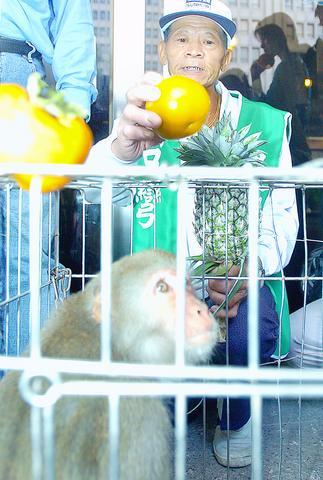
PHOTO: LIAO CHEN-HUI, TAIPEI TIMES
The farmers complained that the monkeys take their fruit, ravage farmland, and even sometimes harass women and children.
They asked the government to consider taking the monkeys off the conserved animal list and that the council also compensate them for their crop losses.
They said that although the macaques repeatedly wreak havoc on farmland, they cannot be rounded up or killed because they are protected animals -- so the only way to deal with them is to chase them away.
They suggested that the COA conduct a comprehensive count of the animals to investigate their numbers and consider removing them from the protected animal list.
The farmers later went to the council with their requests. In addition to compensation for crop losses and removal of the monkeys from the protected list, they also suggested that a tourism zone be set up to shelter the macaque.
They brought with them two rock macaques in cages, along with pineapple plants damaged by the macaques and pointed out how the animals gnaw the roots of the plants, seriously affecting the crop.
Council Vice Chairman Tai Chen-yao (戴振耀) said the council would set up a task force to investigate the damage and study ways of subsidizing the farmers.
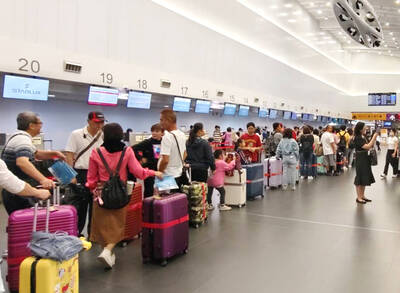
Three Taiwanese airlines have prohibited passengers from packing Bluetooth earbuds and their charger cases in checked luggage. EVA Air and Uni Air said that Bluetooth earbuds and charger cases are categorized as portable electronic devices, which should be switched off if they are placed in checked luggage based on international aviation safety regulations. They must not be in standby or sleep mode. However, as charging would continue when earbuds are placed in the charger cases, which would contravene international aviation regulations, their cases must be carried as hand luggage, they said. Tigerair Taiwan said that earbud charger cases are equipped
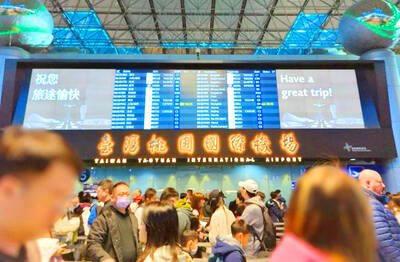
Foreign travelers entering Taiwan on a short layover via Taiwan Taoyuan International Airport are receiving NT$600 gift vouchers from yesterday, the Tourism Administration said, adding that it hopes the incentive would boost tourism consumption at the airport. The program, which allows travelers holding non-Taiwan passports who enter the country during a layover of up to 24 hours to claim a voucher, aims to promote attractions at the airport, the agency said in a statement on Friday. To participate, travelers must sign up on the campaign Web site, the agency said. They can then present their passport and boarding pass for their connecting international
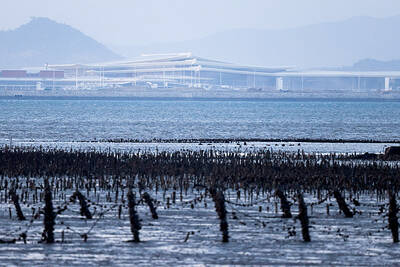
UNILATERAL MOVES: Officials have raised concerns that Beijing could try to exert economic control over Kinmen in a key development plan next year The Civil Aviation Administration (CAA) yesterday said that China has so far failed to provide any information about a new airport expected to open next year that is less than 10km from a Taiwanese airport, raising flight safety concerns. Xiamen Xiangan International Airport is only about 3km at its closest point from the islands in Kinmen County — the scene of on-off fighting during the Cold War — and construction work can be seen and heard clearly from the Taiwan side. In a written statement sent to Reuters, the CAA said that airports close to each other need detailed advanced
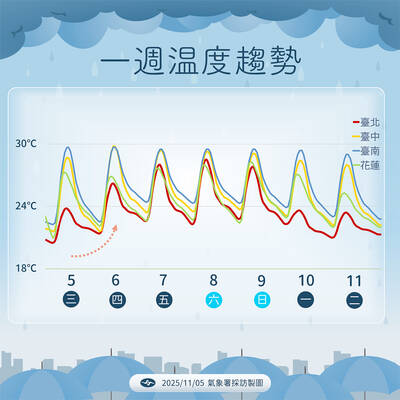
UNKNOWN TRAJECTORY: The storm could move in four possible directions, with the fourth option considered the most threatening to Taiwan, meteorologist Lin De-en said A soon-to-be-formed tropical storm east of the Philippines could begin affecting Taiwan on Wednesday next week, the Central Weather Administration (CWA) said yesterday. The storm, to be named Fung-wong (鳳凰), is forecast to approach Taiwan on Tuesday next week and could begin affecting the weather in Taiwan on Wednesday, CWA forecaster Huang En-hung (黃恩鴻) said, adding that its impact might be amplified by the combined effect with the northeast monsoon. As of 2pm yesterday, the system’s center was 2,800km southeast of Oluanbi (鵝鑾鼻). It was moving northwest at 18kph. Meteorologist Lin De-en (林得恩) on Facebook yesterday wrote that the would-be storm is surrounded by